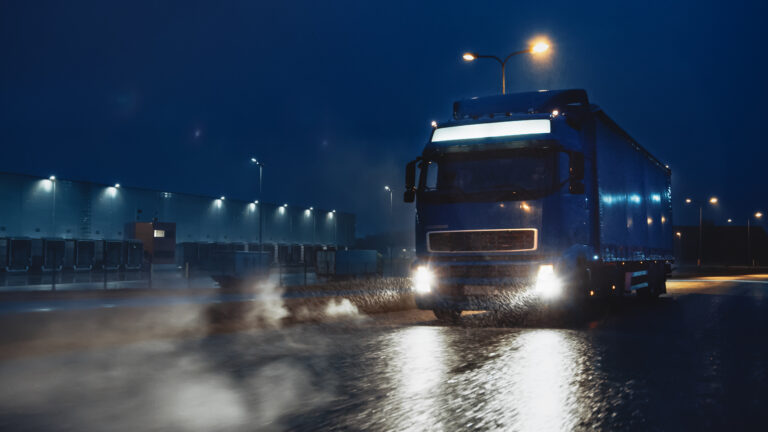A survey by driver risk management and road safety training provider TTC has found that one in 10 respondents admitted to having ‘knowingly driven after having more than the legal limit’.
With the Christmas period quickly approaching, it is important that drivers of fleet vehicles understand the importance of appropriate driving behaviour, especially concerning the consumption of alcohol and drugs. The consequences of driving under the influence are severe and can significantly impact not only the individual, but their employer also.
UK law states that the legal alcohol limit for driving in England, Wales and Northern Ireland is 80 milligrams of alcohol per 100 millilitres of blood or 35 micrograms of alcohol per 100 millilitres of breath. It is also a criminal offence to drive with any of 17 controlled drugs above a specified level in your blood, some of which are legal and can be prescribed by a doctor.
Penalties for driving under the influence of alcohol or drugs include a criminal record, a maximum of six months imprisonment, an unlimited fine, and an automatic driving ban of at least one year (or three years if convicted twice in 10 years).
Other penalties aside, a driving ban can be catastrophic for individuals and businesses. If a commercial vehicle driver is banned from driving for over a year, their livelihood is lost and their employer is left without one of their drivers for a long period of time. With driver shortages remaining an issue in the logistics industry, the impact of losing drivers to drink or drug driving offences should not be underplayed.
It is unlawful for an organisation to continue employing a driver who has received a driving ban and any firm knowingly doing so would open itself up to lawsuits, which could lead to fines and costly legal processes.
Results from the aforementioned TTC survey reveal a lack of knowledge when it comes to regulation and penalties. According to TTC, one in four motorists confessed that they don’t know the legal drink drive limit, while 64% wrongly believed a first conviction could come with a driving ban of as little as six months.
Sharon Haynes, director of police & court referred at TTC, commented: “Drivers don’t have to be over the limit to increase their risk, but our survey results suggest drivers and passengers have a much too relaxed view of drink or drug driving. All too often this is simply due to a lack of awareness of the impact alcohol and medicinal and recreational drugs have on our senses and ability to drive safely.
“Whether employees are driving a company car or their own vehicle, if they are driving for work the company still has a duty of care, so these findings suggest there is a significant opportunity for employers to educate their employees and help reduce risk.
“Ultimately, fleet managers need to help those people who have an attitude of ‘it won’t happen to me’ understand the very real risk they pose to themselves and others whenever they drink or drug drive. They should always ask themselves, ‘is it worth it?'”
There are measures that businesses in the transport and logistics industry can take to prevent drink and drug driving. Obviously, awareness is key and organisations should provide regular training on the consequences of driving over the limit.
Another form of prevention is testing. By doing spot checks, organisations can not only immediately stop someone from getting out on the road while unfit to drive, but the potential to be tested can encourage safer behaviour around alcohol and drugs before and during work hours.
It’s not just the road transport network where sobriety is important. On a recent visit to Europa’s warehouse in Corby, Logistics Manager spoke to COO and head of the warehouse division, Dionne Redpath about breathalyser spot checks for staff operating heavy machinery.

She said: “When we talk about the Corby site specifically – or any of our operational sites for that matter – we have people that are driving materials handling equipment (MHE) as part of their day-to-day activities. We’ve also got people who are working within the live work environment on foot, so to keep everyone safe, we insist that everybody driving forklift equipment or any MHE operative has a mandatory breath test which I think is really important because we need to make sure that we’re keeping everybody safe including those people who are working at heights or working with heavy weights; we need to make sure everybody is ‘on their game’ as far as that’s concerned.
“And then as far as people who aren’t driving MHE, they’re subject to the randomiser. We can set that randomiser to whatever percentage of the workforce we feel it crucial to check and that’s done by, in this case, an external party – our security company – so it’s very impartial, it’s applicable to everybody entering the warehouse environment.
“We are each responsible for making that environment, for ourselves and our colleagues, the safest it can be. For me that feels like a really solid initiative that places focus on everybody’s attention and acts as a bit of a deterrent so [operators] might think twice about having that extra drink the night before a shift because the consequences of blowing over the limit make it not a great situation for people; it actually puts colleagues at risk, and we can’t stand by and let that happen.”
To read the full feature on safety in logistics in the December of Logistics Manager, click here.







